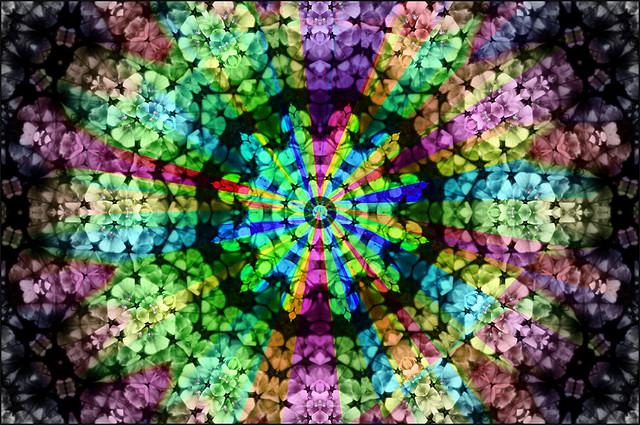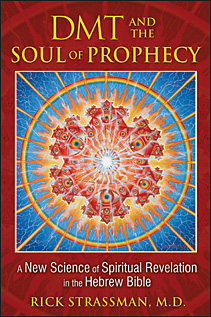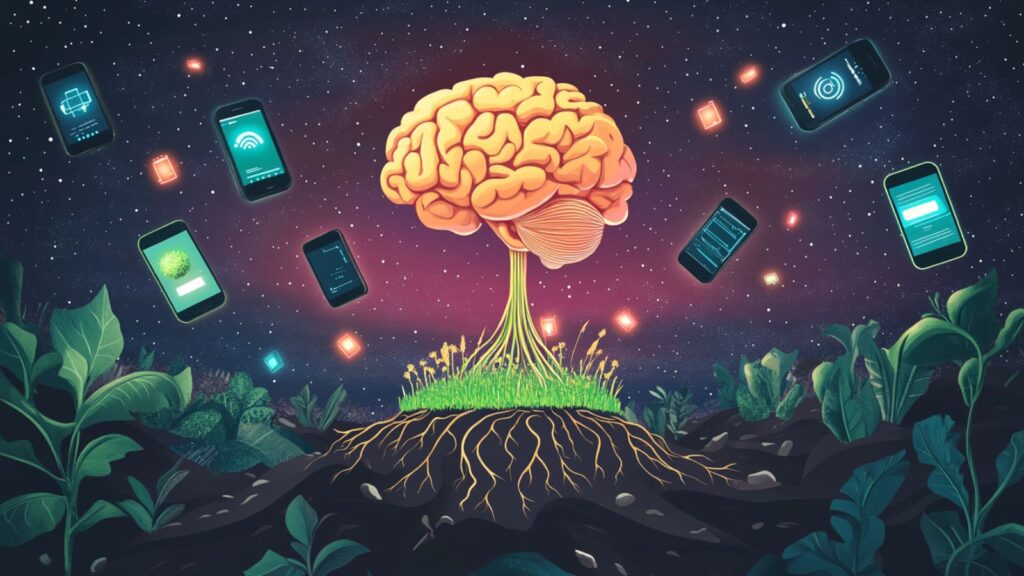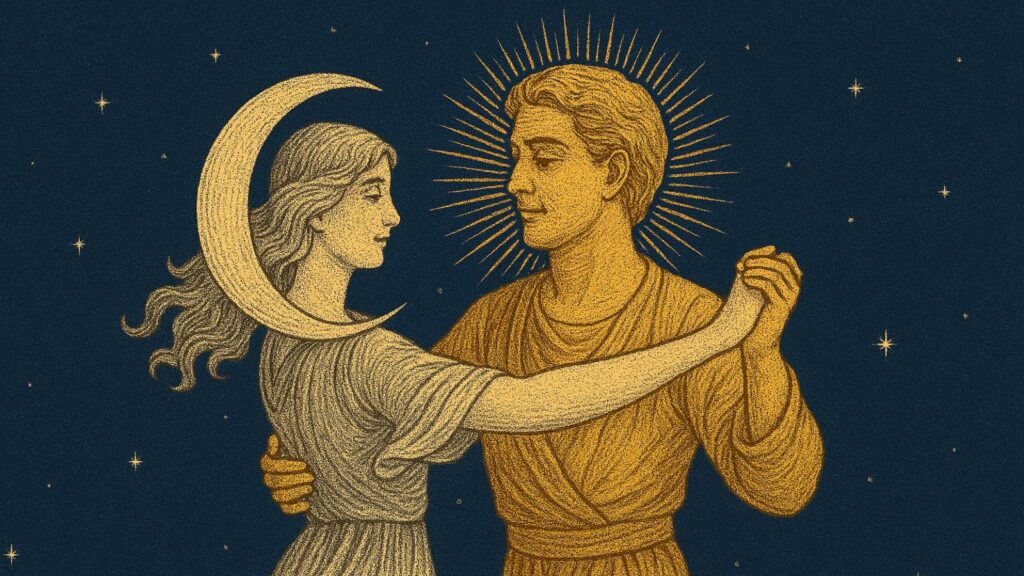A stormy wind was coming from the north, a great cloud with flashing fire and a brilliance surrounding it…and from its midst, a semblance of four Living Creatures.… And as for the appearance of the Living Creatures, their appearance was like fiery coals, burning like the appearance of torches…. There was a brilliance to the fire, and from the fire went forth lightning…. Then I heard the sound of their wings like the sound of great waters…the sound of the words like the sound of a company…I fell upon my face and I heard a voice speaking,… “Son of man, stand on your feet and I will speak to you.” (Ezekiel 1:1-2:1)
Large crystalline prisms appeared, a wild display of lights shooting off into all directions…. My body felt cool and light. Was I about to faint?… My mind was completely full of some kind of sound, like the aftereffects of a large ringing bell….Out of the raging colossal waterfall of flaming color expanding into my visual field, the roaring silence, and an unspeakable joy, they stepped, or rather, emerged. Welcoming, curious, they almost sang,… “Now do you see? Now do you see?” (DMT: The Spirit Molecule, pg 344)
The first excerpt is from one of the books of the Hebrew Bible (the “Old Testament”), attributed to the mid-sixth century BCE Hebrew prophet Ezekiel. It is an account of his initiatory vision, standing by a river in Babylonia. The second excerpt is from a psychologist who participated in DMT research at the University of New Mexico in the early 1990s. DMT or dimethyltryptamine, is a powerful psychedelic substance found and made in all our bodies, in the bodies of other mammals, and in thousands of plants.
The similarities between accounts are striking. At the same time, the two settings could not be more different. Ezekiel’s take place during the exile of the Hebrew people from their country by the Babylonian legions, involves no exogenous psychoactive agents, and was intended by the God of the Hebrews— YHVH— to instruct the exiled community. Leo’s state was occasioned by the administration of a drug, on a bed in a university hospital room in a research unit in Albuquerque New Mexico. He was in a scientific protocol that he had volunteered for, funded by the National Institutes on Drug Abuse and the Scottish Rite Foundation for Schizophrenia Research. Regardless of the differences in setting and set, both states contain a flashing, flowing preternaturally intense display of lights; the emergence of nearly overwhelmingly powerful, sentient, apparently living, creatures interacting with the experient; great emotional intensity; a sound that fills the mind; and physical lightness or weakness.
What do these similarities mean? How are they relevant to the contemporary psychedelic drug experience? Or, for that matter, to the Hebrew Bible’s notion of prophecy, both in the past and in the present? These are some of the many topics I raise and discuss in my new book, “DMT and the Soul of Prophecy” (Park Street Press, 2014).
At the end of my DMT study in 1995, which I describe in “DMT: The Spirit Molecule” (Park Street Press, 2001), I was left with questions regarding how best to interpret the DMT experience. Was it real? What did it mean? Why does the body synthesize DMT in the first place?
I entered my DMT research carrying several models through which I hoped to help volunteers understand and integrate their sessions: psychopharmacologic, psychoanalytic, and Buddhist, especially that of Zen Buddhism. While performing this study it was clear that all these models fell short. One reason is that all of them posited the basic unreality, the hallucinatory or illusory nature, of what the experient perceived. The psychopharmacologic model explained the DMT effect as the result of certain neural receptors being activated by a drug with certain pharmacological characteristics; in other words, the brain was generating the experience. The psychoanalytic approach saw the visions and the voices of the DMT effect representing previously unconscious mental processes and contents; one’s psychology was generating the experience. The Zen model also takes the approach that the DMT world is illusory, and in fact is a distraction that the mind throws up to prevent the attainment of the ultimate goal of meditation: the formless, concept-free, ego-less state of enlightenment. Nearly all the DMT subjects, on the other hand, emerged from the drug effect convinced of the absolute reality of what they had just undergone. They had observed something previously invisible, rather than hallucinating something unreal. They were convinced of the external, objective, and ongoing nature of this parallel level of reality. Some even felt that the DMT world is more real than this one.
I sought other models that might help explain how DMT allowed someone to perceive an alternative level of reality. Recent advances in our understanding of dark matter, dark energy, and parallel universes provide possible scientific explanations for such a phenomenon: the drug may modify the receiving characteristics of the brain-mind complex in such a way as to make these parallel levels of reality visible, in much the same way scientists have built and are building machines to perform the same task. While these models provided useful mechanisms of action, they still did not answer the fundamental question of why this necessarily is the case. And more importantly, it said very little about the value of the information one experiences in these other worlds, how to apply them for the benefit of ourselves and our world.
Religious/spiritual systems also address usually invisible worlds. Besides describing methods of attaining certain highly-valued subjective experiences and characterizing the experiences themselves, religions have also attempted to extract moral, ethical, theological, and other information from these states. They have also developed language and images to communicate that information, along the way developing resonant conceptual and social systems.
Eastern religious models, especially Buddhist, for the spiritual properties of the psychedelic state are popular and academically sanctioned. Above, I refer to Buddhism’s approach to visions and how its desired endpoint of enlightenment differ from those of the DMT experience and its interpretation. Recently there is a fascination with Latin American shamanism. However, there is a lack of resonance between contexts: tribal forest life versus urbanized post-industrial life. The absence of a God recognizable to most Westerners is another stumbling block, just as it is in the case of Eastern religions. The lack of an obvious ethical-moral framework within Latin American shamanism also points to it being a less than ideal alternative.
I decided to return to my own roots of Judaism and begin looking for a spiritual model for the DMT effect in the foundational text of Judaism, the Hebrew Bible,. The Hebrew Bible is extraordinarily difficult to study, and in particular, the text’s notion of God is problematic. The emotional and intellectual hurdles involved are daunting and it was only after discovering the teachings of the medieval Jewish philosophers such as Maimonides that I was able to identify and deal with these hurdles.
Working my way through the text, the notion of a “prophetic state of consciousness” started emerging. By prophecy, I do not mean the common definition of foretelling or predicting; rather, it is any spiritual experience occurring within a Hebrew Biblical figure. Such figures include the canonical prophets such as Ezekiel, Isaiah, and Jeremiah, or nameless, faceless men and women who left behind no specific teaching.
The prophetic state is highly congruent phenomenologically with the DMT one. Those who experience prophecy also believe that what they perceive is as real or more real than the everyday world. In addition, prophecy is extremely interactive, one’s ego is well-maintained while relating to the contents of the newly revealed world. The goal of prophecy is an interactive relationship with God or God’s angels, rather than a unitive mystical one, totally identifying with a formless concept-free ego-less level of experience. I emphasize this polarity between the “mystical-unitive” and “interactive-relational” states throughout “DMT and the Soul of Prophecy.”
Using these and others tools I performed an exhaustive side-by-side comparison of the DMT and prophetic experiences. This occupies about half of the new book. While the phenomenological contents of both states is strikingly similar—their perceptual, cognitive, volitional, physical, and emotion characteristics—the information content tilts heavily in favor of the prophetic one. If one thinks about it, the information contained in the Hebrew Bible, the paradigmatic prophetic text, has influenced billions of people over thousands of years. Western civilization is essentially a civilization growing out of this text; for example, our economy, law, philosophy, theology, science, art, and ethics and morality. In the contemporary West, the psychedelic experience has primarily contributed to a particular aesthetic with, at least for now, much less impact relative to the prophetic state.
I then review medieval metaphysical mechanisms of prophecy and attempt to bridge them with the notion of endogenous DMT. The result is a new model of spiritual experience, what I call “theoneurology.” In it, I present a counterpoint to the popular “neurotheology.” Neurotheology is a bottom-up approach. The “spiritual experience” is what we call the brain’s response to any number of particular stimuli: prayer, meditation, fasting, or psychedelic drugs. The experience has adaptive value, making us healthier, smarter, and more socially viable. Theoneurology is a top-down model and suggests that God configured the brain in such a way as to be able to communicate with us information that we may or may not consider especially beneficial, at least over the short term. DMT may play a role in this communication process. This model suggests that God uses the brain to relate with us rather than that the brain creates the impression of such a relationship.
I conclude the book by suggesting certain implications of the theoneurological model. Related research is taking place: the use of psilocybin to occasion spiritual experience. In addition, there is a growing popularity of syncretic ayahuasca—a DMT-containing sacrament—that refer to Hebrew Biblical stores, figures, and teachings. Thus, one who wishes to resonate more deeply with the biblical text might enter into a state of mind near to that from which the text originally emerged—the prophetic state. To the extent that DMT and other psychedelics occasion altered states of consciousness with “prophecy-like” features, one could consider the judicious use of these agents in this context. In a complementary manner, those who use psychedelic drugs for spiritual purposes may wish to consider the Hebrew Bible an interpretive tool for understanding and applying the information contained in their drug sessions.
An interesting discovery during this project was the Hebrew Bible’s notion of “false prophecy” and “false prophets.” These are extraordinarily relevant—and equally as subtle—issues involved in dealing with the “truth” or “goodness” of any experience we consider spiritual. Discriminating between false and true prophecy is difficult and because of this I raise the issue throughout my book. Its importance is basic to any attempt to understand and utilize either the psychedelic or prophetic state.
One may order “DMT and the Soul of Prophecy” via my website (www.RickStrassman.com), Amazon.com, Barnes & Noble, my publisher Inner Traditions, or your local bookstore. If you order it through me, I will sign and inscribe it to you.
Teaser image by Felipe Venâncio, courtesy of Creative Commons license.














